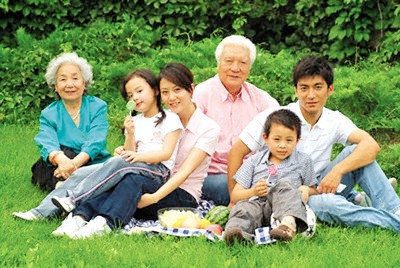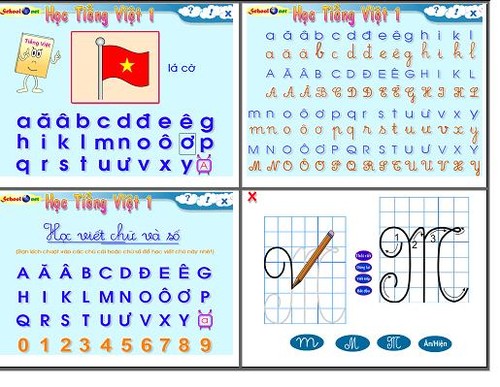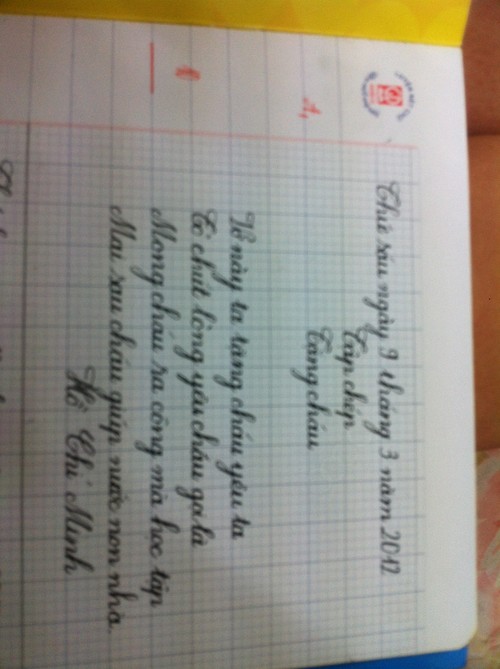Hello and welcome to VOV’s Letter Box, our weekly feature dedicated to listeners throughout the world. We are Mai Phuong and Ngoc Huyen.
A: First on our show today, we’d like to welcome back Bert Sing of Australia. Mr. Sing has recently resumed listening to shortwave radio after a long time. Sing reported listening to our program on Monday February 17, on the frequency of 12020 Khz from 10:00 to 10:25 UTC.
B: Sing wrote: “I was very pleased with the content of the broadcast. I enjoy what I am doing- shortwave radio has been my favorite pastime. I started listening when I was 14 years old, but nowadays, it seems that there are fewer shortwave radios because of the internet”.
A: Thank you for coming back. Shortwave radio remains an effective channel of information and this has been proved by the increasing number of VOV listeners, even though our radio broadcasts are also available on the internet at www.vovworld.vn. Check it out.
B: Joshep Astalfa of the US reported listening to our program on December 22 on the frequency of 6175 kHz. Astalfa wrote: “My primary goal in shortwave listening is to receive news and cultural programming from other nations and I found your broadcast to be quite interesting. While most of the international material was already known to me, the story regarding the popularity of Latin dancing styles in Vietnam was both unexpected and highly intriguing. This sort of story is exactly what I turn on my shortwave receiver to hear and I plan to tune to your station as much as possible in the future”.
A: Sharing Mr. Astalfa’s impressions on VOV’s broadcasts about Vietnam, its land and people are John Durham of New Zealand and Masaru Sekimoto of Japan, who sent a reception report of the VOV broadcast on February 22 on the frequency of 9840 kHz. Mr. Durham began listening to our broadcasts in 1962. Such a long time ago! We greatly appreciate your listening and your report on how clearly VOV broadcasts can be heard in New Zealand. Thank you.
B: In an email to VOV this week, S B Sharma of India wrote that she is interested in learning more about naming new born babies in Vietnam.
A: When a child is born, his or her parents and grandparents want to give him or her a beautiful name which embodies their aspirations and understanding of life.
B: Vietnamese personal names generally consist of three parts: a family name, a middle name and a given name, in that order. For example, with the name Nguyen Van Hung: the family name is Nguyen, the middle name is Van and the given name is Hung. The middle name sometimes consists of more than one word.
A: Names not only differentiate between people, but also carry cultural meanings. Traditionally, the gender of a person is identified by their middle name – Van for males and Thi for females. Van means literature and Thi means market. According to Oriental feudal beliefs, boys should focus on studies aimed at maintaining the continuity of the family line, while girls should focus on housework. Popular Vietnamese names for males are Hung (strength, hero), Cuong (robust, healthy), Thanh (success) or Dat (achievement).
 |
B: Female names are often associated with fruits, such as Mo (apricot), Dao (peach) or Man (plum) or with flowers like Lan (orchid), Mai (apricot blossom), or Cuc (chrysanthemum). But sometimes, names are based on the sign of the year the person was born, such as Ty (rat), Suu (buffalo), Dan (tiger) and Mao (cat). Some people are named after seasons: Thu Cuc (autumn chrysanthemum) or Xuan Dao (spring peach blossom). The way people are named is also based on principles of Vietnamese phonetics so as to be pleasant to the ear.
A Vietnamese name may be associated with a certain place, which is often the homeland of the father or mother. Nowadays, parents often name their children to express their values and hopes. Female names can be Ngoc Anh (clear gem) or Kim Chi (aristocratic). Some male names are Nhan (benevolence), Nghia (chivalry), or Tri (wisdom), Son (mountain), Hai (sea) and Phong (wind), expressing a hope that the name holder will be a strong person.
B: What about my name, Ngoc Huyen? Do you think it’s beautiful?
A: Yes, very. It also means Black stone- a kind of gem stone. Right?
B: You’re right! Let’s continue reading our listeners’ letters. Ashik Eqbal Tokon, a regular listener in Bangladesh has sent us a number of letters and emails reporting his listening to our programs and giving us some information about Bangladesh’s culture.
A: Ashik wrote about Bangladesh’s observance of International Mother Language Day and asked about the Vietnamese language and its history.

Vietnamese alphabet
|
B: Vietnamese or Tieng Viet is the official national language of Vietnam. It is the native language of the majority of Vietnamese people. It is spoken as the first or second language by the many ethnic minority groups in Vietnam.
A: It is part of the Austro-Asiatic language family of which it has, by far, the most speakers. Vietnamese vocabulary has some borrowings from Chinese, and was influenced by French as Vietnam was under French rule for nearly 100 years. The Vietnamese alphabet in use today is a Latin alphabet with additional diacritics.
B: Vietnamese is basically a monosyllabic language with six tones, which give the language a sing-song effect. A word can be repeated with any one of six tones to indicate six different meanings.
A: Contemporary Vietnamese has distinguishable northern, central and southern dialects. The northern speech is marked by sharpness, or choppiness, with greater attention to the precise distinction of tones. The southern speech, in addition to certain differences in the pronunciation of consonants, does not distinguish between the hoi and nga tone; and, it is thought by some to sound softer and more musical. The speech of the Center, on the other hand, is often described as being heavy because of its emphasis on low tones.

Writing practicing notebook of a 2nd grader
|
B: We could talk for hours about the Vietnamese language and its history. Why don’t we table this topic for a later show. We should move on to our other listeners.
A: That’s fine. On today’s show, we’d like to acknowledge letters and emails from Hannu Kiiski of Finland, Alan Fenix and John Relethford of the US, Muhamed Zainai and Tjang Pak Ning of Indonesia, Ratan Kumar Paul, Ajithkumar, and Ms Karobi Hazarika of India, Rana Dewan Rafiqul and Mizanur Raman of Bangladesh, Jorge Luis Medina of Venezuela, and Peter Ng of Malaysia. We’ll verify your reception reports and send you some QSL cards soon.
A: That’s it for this week’s Letter Box. We welcome your feedback at: English Section, Overseas Service, Radio the Voice of Vietnam, 45 Ba Trieu Street, Hanoi, Vietnam. Or you can email us at: englishsection@vov.org.vn. You’re invited to visit us online at www.vovworld.vn, where you can hear both live and recorded programs. Good bye.